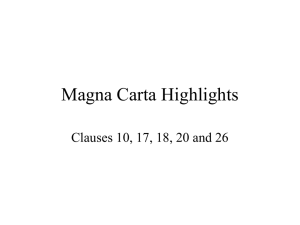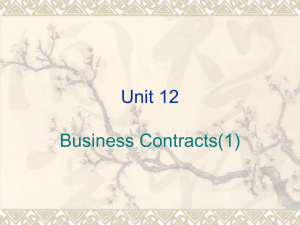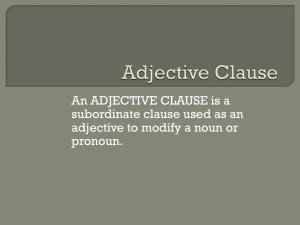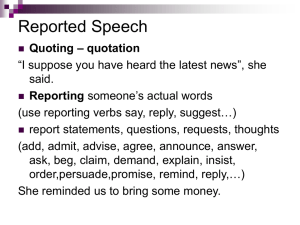Document
advertisement
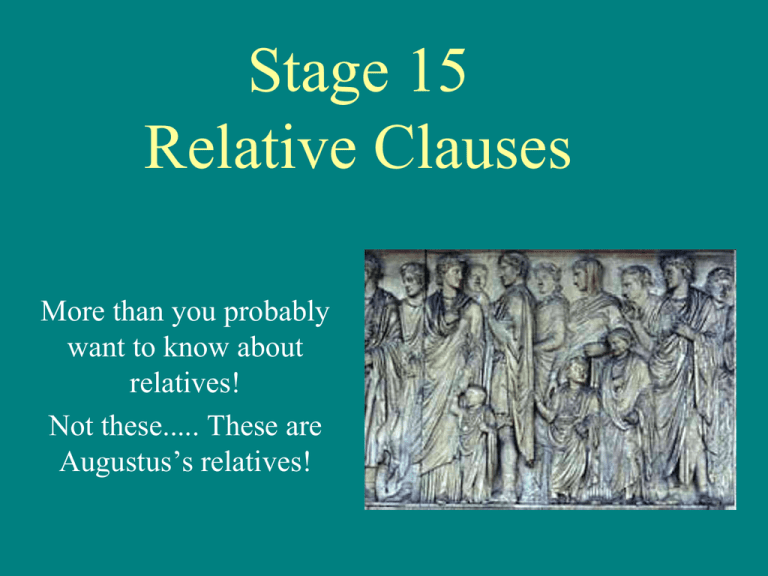
Stage 15 Relative Clauses More than you probably want to know about relatives! Not these..... These are Augustus’s relatives! What we’ll cover • • • • • What is a clause? The English relative clause The English relative pronoun The Latin relative pronoun Latin relative clauses What is a clause? • Any thought, idea, or event which is expressed in language Clause 1: Rufilla is unhappy. Clause 2: Rufilla lives far fom London. 2 clauses: Rufilla is unhappy because she lives far fom London. 2 clauses: Rufilla, who lives far fom London, is unhappy. An English Relative Clause is... ... a giant adjective clause, giving us information about a noun in another clause. Let’s look at an example showing how the relative clause evolves..... Here’s an example – we have two single clauses: Clause 1: The boys are not listening to the master. Clause 2: The master is reading a very long story. Relative Clause Now, we’ll weave the two clauses into one sentence – with a Main Clause and a relative clause describing a noun in the Main Clause. Step 1: Clause 1: The boys are not listening to the master. Clause 2: The master is reading a very long story. Substitute a pronoun for “master” in Clause 2. Clause 1: The boys are not listening to the master. Clause 2: He is reading a very long story. Weave into one sentence Step 2: Clause 1: The boys are not listening to the master. Clause 2: He is reading a very long story. Weave them together into one sentence..... MAIN CLAUSE: The boys are not listening to the master, RELATIVE CLAUSE: who ? is reading a very long story. giant adjective describing the master English Relative Pronoun • The English relative pronoun has cases – just like in Latin! PEOPLE/ANIMALS Nominative Acusative who whom ANIMALS/THINGS which which Note: 1. In English, we often say “that” instead of “who,””whom,” or “which.” The boy whom I like plays basketball becomes The boy that I like plays basketball 2. In English we also can omit the relative pronoun altogether. The boy I Iike plays basketball. THIS CANNOT HAPPEN IN LATIN – LATI N MUST ALWAYS USE A RELATIVE PRONOUN Another Example • Clause 1: The slave is terrified. • Clause 2: The bull is chasing the slave. Now, we’ll weave the two clauses into one sentence – with a Main Clause and a relative clause describing a noun in the Main Clause. • Clause 1: The slave is terrified. • Clause 2: The bull is chasing the slave. Step 1: Replace “slave” in Clause 2 with a pronoun – what pronoun? Clause 1: The slave is terrified. Clause 2: The bull is chasing __?__. him Clause 1: The slave is terrified. Clause 2: The bull is chasing him. Step 2A: Merge the two sentences.... The slave – the bull is chasing him – is terrified Step 2B: A bit more work to make one MAIN CLAUSE and one RELATIVE CLAUSE The slave – the bull is chasing him whom – is terrified Now, replace the pronoun “him” with a relative pronoun – what relative pronoun? Final Adjustments The slave – the bull is chasing whom - is terrified. That’s not how we really would say it.... So, move the relative pronoun – whom – to the beginning of the relative clause.... And EUGE! The slave, whom the bull is chasing, is terrified. giant mutant adjective describing the slave


